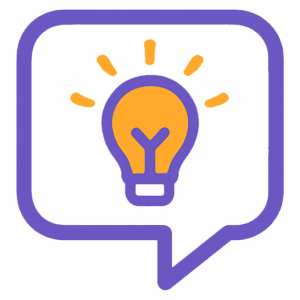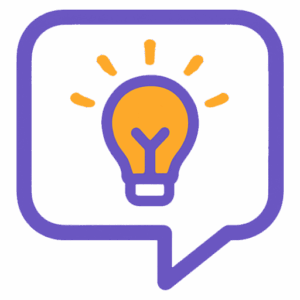When we talk about learning a new language, we often use the term “second language.” But what does that actually mean? Is a second language simply any language learned after your first one? Does it depend on how well you speak it, or where you use it? The concept of a second language, though it sounds simple, touches on some of the most fascinating questions in linguistics, psychology, and education. Let’s explore what a second language really is, how it differs from a foreign language, and what science tells us about learning one.
Defining a Second Language
A second language (L2) is generally defined as any language learned after a person’s first language (L1), also known as their native language or mother tongue. The key feature of a second language is that it is used in the learner’s daily environment. For example, if a child grows up speaking Persian at home but learns English at school and uses it in the community, English is that child’s second language.
This differs from learning a foreign language, which usually happens in a classroom without much exposure outside of lessons. For instance, if a student in Japan studies French at school but rarely hears it outside class, French would be considered a foreign language, not a second language.
However, the distinction between “second” and “foreign” language is not always strict. Many scholars use “second language learning” as a general term to cover both situations. What matters most is how the language is learned and used in real life, not just where it’s taught.
Why Learn a Second Language?
There are many reasons why people learn a second language. Some do it out of necessity, while others are motivated by curiosity, career goals, or cultural interest.
- Migration and communication: Millions of people move to new countries each year. To live, work, or study in their new environment, they need to learn the local language.
- Education and work: English, in particular, has become a global language for business, science, and technology. Being bilingual or multilingual can open doors to better job opportunities.
- Cultural connection: Learning another language helps people connect with other cultures through literature, films, and conversations. It gives them a deeper understanding of how others think and express themselves.
- Cognitive benefits: Studies have shown that bilinguals often develop better problem-solving and multitasking skills. Some research even suggests that learning another language may delay cognitive decline as people age (Bialystok et al., 2007).
How a Second Language Is Learned
The process of learning a second language depends on several factors, including age, exposure, motivation, and the similarity between the first and second languages.
- Natural acquisition: Children who grow up in multilingual environments often acquire two or more languages naturally, just as they learn their first language.
- Formal learning: Many people learn their second language in a classroom setting, focusing on grammar, vocabulary, and pronunciation.
- Immersion: The most effective way to learn a second language is often immersion, meaning living or interacting daily in an environment where that language is spoken.
A key idea in language learning research is the Critical Period Hypothesis, proposed by linguist Eric Lenneberg (1967). It suggests that there is an ideal window in childhood for language acquisition, after which it becomes harder to reach native-like fluency. While this theory remains debated, it’s widely accepted that children tend to learn pronunciation and grammar more effortlessly than adults.
However, adults also have advantages. They can apply learning strategies, understand grammar explanations, and use technology for practice. With the right methods and motivation, learners of any age can achieve fluency.
Second Language vs. Bilingualism
It’s important to distinguish between learning a second language and being bilingual. A second language learner might still be in the process of gaining fluency, while a bilingual person can use two languages fluently and switch between them depending on the context.
Bilingualism can be balanced (equal skill in both languages) or dominant (greater skill in one). Some people grow up bilingual from childhood, while others achieve bilingualism later in life.
Interestingly, being bilingual changes how the brain works. Neuroimaging studies show that bilinguals activate overlapping but distinct areas of the brain when using different languages. This constant switching can improve executive control, which includes skills that help with attention, planning, and problem-solving (Abutalebi & Green, 2007).
Challenges in Second Language Learning
Learning a second language can be rewarding, but it also comes with challenges.
- Interference from the first language: Learners often apply the grammar or pronunciation rules of their native language to the new one. This can lead to errors such as “I am agree” (influenced by other languages’ structures).
- Limited exposure: Without real-life opportunities to use the language, learners may struggle with listening and speaking skills.
- Motivation and confidence: Language learning requires time and effort. Many learners lose motivation if they don’t see quick progress. Positive feedback and realistic goals can help overcome this.
- Cultural understanding: Learning a language also means understanding its culture. Words and expressions often carry meanings that go beyond literal translation.
Strategies for Success
Here are a few research-backed strategies to make second language learning more effective:
- Spaced repetition: Reviewing words and grammar at increasing intervals helps long-term retention. This principle was first discovered by Ebbinghaus (1885) and later confirmed by many studies (Cepeda et al., 2006).
- Active use: Speaking, writing, and interacting in the target language strengthens memory far more than passive reading or listening.
- Contextual learning: Learning words in meaningful contexts, such as through stories or conversations, is more effective than memorizing isolated vocabulary lists.
- Immersive input: Listening to music, watching movies, or reading in the target language increases natural exposure and helps learners pick up patterns intuitively.
- Consistent practice: Small, regular study sessions are better than long, infrequent ones. Even 10 minutes a day can make a difference when done consistently.
The Broader Impact of Second Language Learning
Beyond personal benefits, second language learning plays a major role in society. In multilingual countries, it promotes understanding and communication among different communities. In education, it prepares students to participate in a globalized world.
Learning another language also fosters empathy. When people learn to express ideas in a new linguistic system, they begin to see the world through another culture’s perspective. This skill is valuable in building international relationships and reducing cultural misunderstandings.
As technology evolves, language learning has become more accessible than ever. Online platforms, apps, and AI-powered tools now make it possible to learn anytime and anywhere. But no matter how advanced these tools become, the heart of language learning remains the same: connecting with people and understanding new ways of thinking.
References
- Abutalebi, J., & Green, D. (2007). “Bilingual language production: The neurocognition of language representation and control.” Journal of Neurolinguistics, 20(3), 242–275. ScienceDirect. DOI 10.1016/j.jneuroling.2006.10.003
- Bialystok, E., Craik, F. I. M., & Freedman, M. (2007). “Bilingualism as a protection against the onset of symptoms of dementia.” Neuropsychologia, 45(2), 459–464.
- Cepeda, N. J., Pashler, H., Vul, E., Wixted, J. T., & Rohrer, D. (2006). “Distributed practice in verbal recall tasks: A review and quantitative synthesis.” Psychological Bulletin, 132(3), 354–380. Author page / PDF
- Ebbinghaus, H. (1885). Über das Gedächtnis. Leipzig: Duncker & Humblot.
- Lenneberg, E. H. (1967). Biological Foundations of Language. New York: Wiley.
- Woźniak, P. A. (1990). “Optimization of learning.” Master’s Thesis, University of Technology, Poznań.

